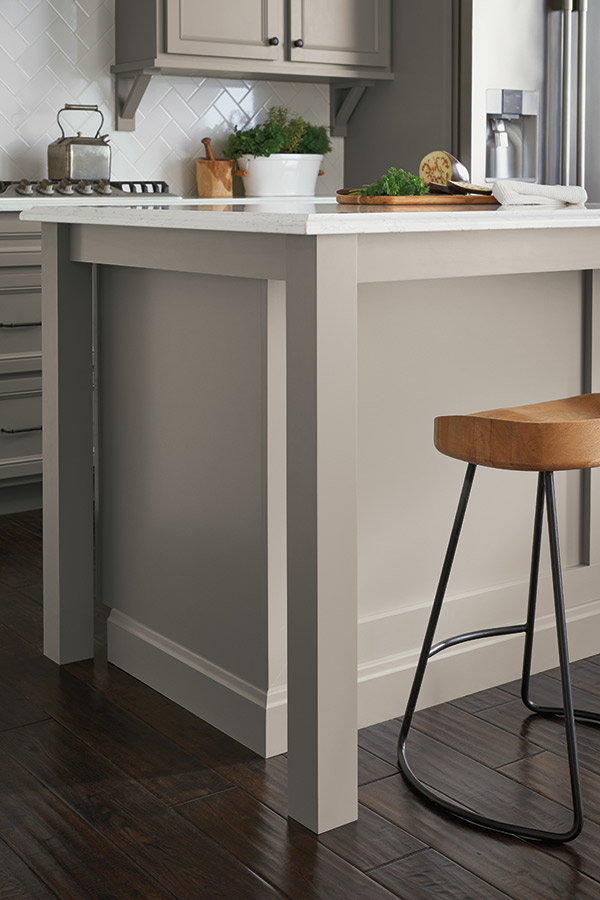Find Sturdy and Ornamental Legs For Kitchen Island Transformations
Find Sturdy and Ornamental Legs For Kitchen Island Transformations
Blog Article
An Overview to Picking the Perfect Legs For Kitchen Island for Your Home
Selecting the excellent legs for your kitchen island is a nuanced choice that influences both the functionality and visual allure of this main area. As you take into consideration these components, it becomes obvious that the best legs can transform not just the look of your kitchen area yet also its functionality for years to come.

Comprehending Kitchen Island Legs
When picking legs for a cooking area island, it's vital to comprehend their functional and aesthetic duties in the general design. The legs function as a critical support group, making sure stability and durability for the island, which frequently operates as a work area, eating area, or collecting spot. Consequently, the option of product and construction technique should be robust adequate to withstand daily use and possible wear.
In addition to their architectural responsibilities, legs contribute substantially to the island's visual appeal. They can enhance the cooking area's design, whether with typical, modern, or diverse designs. The height and percentage of the legs are additionally critical considerations; they must integrate with the island's countertop height while making certain comfy seating for those utilizing the space.
Moreover, the leg design can affect the overall flow of the cooking area. Open, airy leg designs can produce a feeling of lightness, while strong, considerable legs may convey a more based and secure visual - Legs For Kitchen Island. Understanding these visual and practical facets will direct house owners in making educated selections that enhance their kitchen area's design and enhance its use
Popular Styles and Products
The selection of legs for a kitchen area island incorporates a selection of prominent designs and materials, each offering unique characteristics that can enhance both functionality and looks. Among the most sought-after designs are contemporary, rustic, and traditional. Contemporary legs frequently include smooth, minimalist designs that highlight simplicity and tidy lines, making them excellent for contemporary kitchens. Rustic styles, on the various other hand, accept natural environments and often showcase recovered wood or troubled finishes, including heat and charm to the space. Conventional legs generally exhibit elaborate details and workmanship, improving timeless kitchen layouts.

Elevation and Security Considerations

The legs of the kitchen island must provide sufficient assistance, guaranteeing Visit Your URL that the framework can hold up against everyday usage without changing or tottering. Material choice plays a significant role in stability; steel legs, for circumstances, often tend to offer better toughness compared to timber.
Matching Your Kitchen Area Aesthetic
Selecting the right legs for your kitchen island goes past capability; it also plays a significant role in the total visual of the area (Legs For Kitchen Island). When picking legs, consider the design style of your kitchen area.
Legs that complement or comparison with your island's surface and bordering cabinets can create aesthetic harmony or striking focal points. Additionally, consider the surface of the legs; matte, shiny, or textured surfaces can considerably influence the overall feeling of the kitchen area.
Setup and Maintenance Tips
Mounting kitchen island legs requires mindful interest to detail to ensure both stability and visual charm. Begin by picking an appropriate location for your island, guaranteeing it is degree and has enough room for movement. Utilize a stud finder to find wall studs if you are connecting the legs to a wall surface or using brackets for included assistance. Mark the positioning of the legs precisely before drilling.
When securing the legs, utilize top quality screws and, if required, wood glue for extra toughness. For steel legs, make certain that you are making use of appropriate anchors and tools to avoid damage to your flooring. It is suggested to look for levelness after installment, making modifications as required to avoid tottering.
Upkeep is similarly important for durability - Legs For Kitchen Island. Frequently examine the legs for any kind of indicators of wear or loosening, especially in high-traffic locations. Tidy the legs with a suitable cleaner, preventing abrasive materials that may damage the surface area. For wooden legs, consider applying a timber conditioner regularly to maintain their coating. By following these installment and maintenance tips, you can make certain that your cooking area island legs stay both practical and aesthetically attractive.
Conclusion
To conclude, picking the suitable legs for a kitchen area island requires careful consideration of height, stability, and visual compatibility. By picking appropriate materials and styles that straighten with the general cooking area layout, functionality can be boosted while maintaining visual appeal. Correct setup and ongoing maintenance additionally add to the longevity and durability of the cooking area island. Eventually, thoughtful leg option plays a crucial duty in raising both the functionality More Help and design of the kitchen area.
When picking legs for a cooking area island, it's essential to comprehend their practical and aesthetic duties in the general design. Open, airy leg designs can produce a sense of agility, while strong, substantial legs may convey an extra based and steady aesthetic. The legs of the kitchen island must give adequate support, guaranteeing that the structure can endure everyday use without moving or tottering.Mounting cooking area island legs calls for cautious interest to information to make certain both stability and aesthetic allure.In final thought, selecting the appropriate legs for a kitchen area island demands mindful factor to consider of elevation, security, and visual compatibility.
Report this page